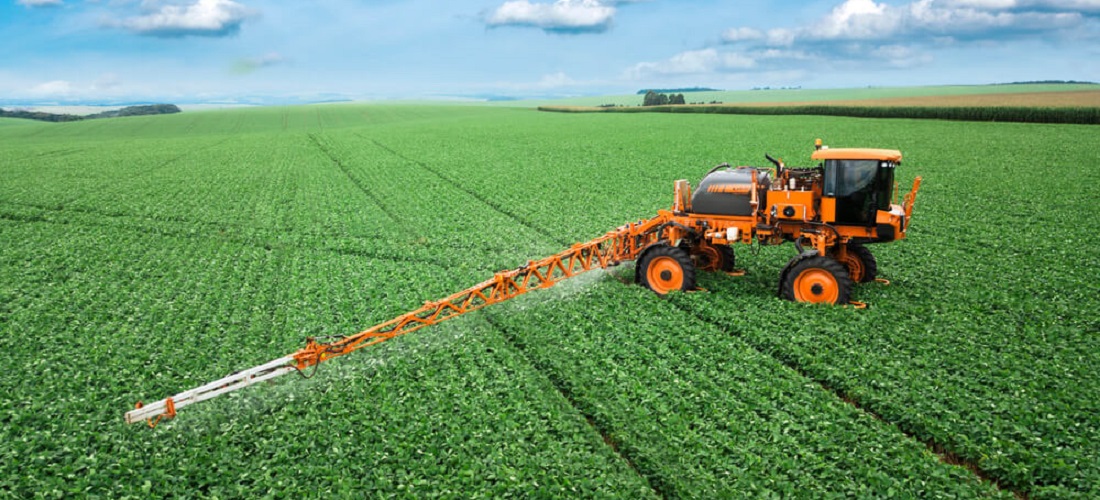
National Fertilizer Plan foresees a drastic reduction in imports
Mar, 09, 2022 Posted by Gabriel MalheirosWeek 202210
The National Fertilizer Plan (PNF) gained momentum in recent months due to supply problems of agricultural inputs that have deteriorated since 2021.
Representatives of some government departments helped formulate the PNF, including the Ministry of Economy, Agriculture, Mines and Energy, Infrastructure, and the Special Secretariat for Strategic Affairs. One of the masterminds behind the program was the Director of Programs at the Ministry of Agriculture, Luis Rangel, who explained what the PNF is.
“The national fertilizer plan is a long-term plan, a 30-year infrastructure transformation plan […] we intend to reduce the national dependence on imported fertilizers from 85% to around 50% or 55%,” he said.
The Canal Rural media outlet had access to the PNF. The document implies that sticking to the PNF could reduce reliance on nitrogenous products by 51% and phosphates by 5%, transforming Brazil into a potash exporter.
The text also calls attention to the worsening situation in the coming years if nothing is done.
“The understanding of the PNF is that, without its implementation, the country will only increase its dependence on imported fertilizers,” says the draft text.
According to 2020 data brought by the PNF, Brazil’s reliance on nitrogen, phosphate, and potassium is estimated to be 95.7 percent, 72 percent, and 96.4 percent, respectively.
The plan also provides strategies for the production and use of organic fertilizers.
The Federal Government outlined five strategic objectives: to modernize, reactivate and expand existing fertilizer plants; improve the business environment to attract investments in the fertilizer production chain; promote competitive advantages in the national fertilizer production chain; expand investments in RD&I (Research, Development, and Innovation); adapt the existing infrastructure to allow the integration of logistic hubs and increase the feasibility of fertilizer operations.
The PNF proposes to attain its goals in different staggered phases. See below a few of them:
2030
- Have the capacity to produce 1.9 million tons of nitrogen (estimated production in 2020 of 224 thousand tonnes);
- Have a production capacity of 4.2 million tonnes of phosphate nutrients (production was between 1.7 and 2 million tonnes/year in the last five years);
- Increase the national output of potassium oxide to 2 million tonnes (estimate production was of 250 thousand tonnes in 2020);
- Install at least two nitrogen fertilizer production companies;
- Attract at least R$ 10 billion to the construction of nitrogen fertilizer plants;
- Increase the number of phosphate-based fertilizer factories from 5 to 7 units, bringing the total to ten by 2040;
- increase the number of potash factories from 5 to 10 units, bringing the total to 20 by 2040;
2050
- Increase the capacity to produce nitrogen to 2.8 million tonnes
- Increase the ability to produce phosphate nutrients to 9.2 million tonnes
- Attain a production capacity of 6 million tonnes of potassium oxide;
- Install at least four more nitrogen fertilizer-producing companies;
- Attract at least another R$ 20 billion from 2030 to 2050 in constructing nitrogen fertilizer plants.
In addition to expanding the national fertilizer manufacturing portfolio, the plan proposes strengthening international cooperation and “promoting the creation of a South American fertilizer industry council within Mercosur” and “enabling bilateral agreements until 2025 for increased access to Bolivian and Argentine natural gas to be used in the production of fertilizers.” Altogether, the PNF sets 82 goals and 129 action plans.
In terms of financing, the text mentions instruments like fundraising in capital markets; Bank credit; credit lines from the National Bank for Economic and Social Development (BNDES); resources from the Financier of Studies and Projects (Finep); non-refundable funds in the research and innovation segment of the Empresa Brasileira de Pesquisa e Inovação Industrial (Embrapii).
As for the management and monitoring of these objectives, the document suggests the creation of the National Council on Fertilizers and Plant Nutrition (Confert), which the Federal Executive Branch will make up, including the Ministries of Agriculture, Economy, Mines and Energy, and Infrastructure, as well as people appointed by the National Forum of State Governors and representatives of the national fertilizer industry and rural producers.
National Fertilizer Plan Measures
According to Luis Rangel, the government is already implementing at least three points in the plan to try to alleviate problems with agricultural input supply.
“Given the acute crisis that has been going on since the end of last year and currently exacerbated by the conflicts in Eastern Europe, the president asked us to separate a few points from the plan so that they could be immediately implemented. The first of these three points is fertilizer and input diplomacy. First, the Ministry of Foreign Relations diverts its attention from foreign sales to purchases to keep these communication channels open. Second, we are improving the logistics of transit to Brazil. Finally, we reaffirm the proper use of fertilizers by utilizing Embrapa and scientific knowledge. It is possible, for example, with a rationalization of processes, to save up to 10% in the use of these fertilizers”, he pointed out.
Source: Canal Rural
To read the full original article, please go to:
https://www.canalrural.com.br/noticias/politica/conheca-o-plano-nacional-de-fertilizantes/
-
Ports and Terminals
Aug, 30, 2022
0
Brazilian Navy task force apprehends over 30kg of cocaine in Paranagua bay
-
Shipping
Mar, 25, 2022
0
Increase in sea freight prices may exceed 20%, says Conab
-
Shipping
Feb, 06, 2020
0
Maersk appoints Brazilian for first time to lead East Coast South American operations
-
Shipping
Nov, 04, 2024
0
CMA CGM reports fraud attempts against its customers

